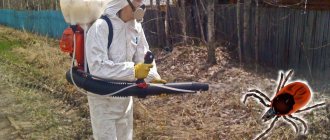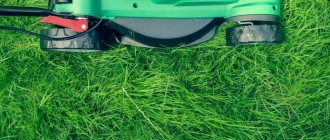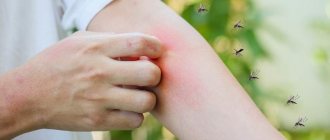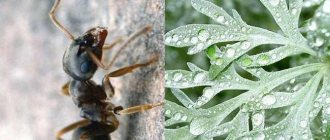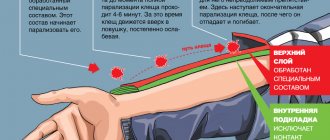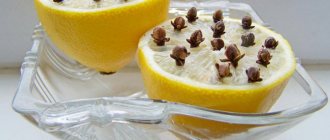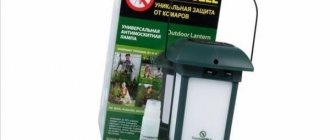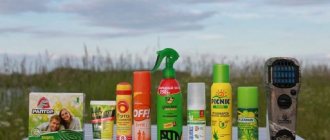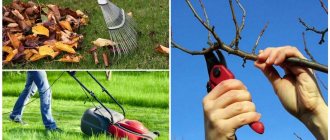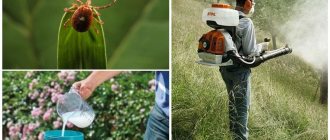Views: 5,855
There are more and more tick bites. Therefore, many owners of dachas, country houses, recreation centers, camps and other areas are wondering whether it is possible to do tick treatment on their own. Yes, you can. In this article we will look at the main points that you should pay attention to :
- What will you have to face? What pitfalls might there be along this path?
- What features do you need to know before starting acaricidal treatment?
- Is it possible to treat a summer cottage immediately against ticks and mosquitoes ?
- When should I treat the area for ticks and mosquitoes?
- When to start the first treatment ?
We will try to consider these and some other questions. We'll tell you everything you need to know about ticks and mosquitoes)
When should I start treating mosquitoes and ticks?
In spring, both ticks and mosquitoes resume their vital activity. And the degree of their activity will depend on many factors . For example, on temperature, humidity, etc. All these points must be taken into account when choosing processing time.
Effect of temperature
Ticks wake up as soon as the snow melts. They overwinter in the litter. Therefore, when positive temperatures are established, insects enter an active state. In this case, it is important how much the thermometer is above zero, as well as whether this temperature is stable or not. The best condition for tick activation is approximately 15 degrees Celsius . You can focus on this figure. If this weather lasts for several days, then it’s definitely time to start fighting bloodsuckers. This temperature is optimal for treating ticks (as it is most suitable for their life activity). As a rule, by this time the parasites have already made themselves felt.
If the spring turns out to be cold enough, this will make the ticks sluggish and passive. Another option is abnormally high spring weather - up to 30 degrees. In both cases, strong activity of blood-sucking insects may not be observed . Their development is suppressed. Therefore, processing can be postponed for a while.
However, there are exceptions. According to statistics, in some fairly cold regions, even at 5 degrees above zero, high tick activity is observed. This is explained by the fact that after hibernation the insects are very hungry and “angry” . Natural instincts give them enough aggression to overcome unfavorable environmental factors and attack their victims.
The conclusion from all of the above is the following : we must take the temperature into account. But we also do not ignore the real facts of pest attacks. If there are cases of bites, then tick treatment should be carried out without waiting for stable warm weather . However, there should no longer be snow cover. You should not poison ticks and mosquitoes when there is snow and there are puddles around. That is why most often the best time for processing is April-May .
Effect of humidity
This is an equally important indicator that is worth taking into account. For mosquitoes, wet weather is a haven . The more slush, the more they multiply. Ticks need average humidity to function actively . They depend heavily on her. If the weather is too hot and dry, the parasites will stay closer to the ground and attack less. If there are heavy rains, the insects will be washed down in drops, and they will again end up in the litter. Therefore, not too hot, not too slushy weather is optimal for them. At this time, it is best to do treatments against ticks and mosquitoes.
At the same time, humidity also affects the quality of events . Rains following insect baiting very often wash away a significant part of the insecticides from the plants. As a result, the effectiveness of tick control is greatly reduced. Therefore, weather conditions must be taken into account to achieve the best result.
Self-processing of the site
Many summer residents and owners of country houses try to treat their plots against mosquitoes themselves. It is important to consider here that there are no absolutely safe drugs, so you need to carefully choose an insecticide. In addition, it is worth knowing how to spray the product correctly and what rules should be followed in order to protect yourself and your loved ones as much as possible.
Impact zones
It is recommended to start disinfestation with residential buildings and outbuildings, while doors, windows and vents must be tightly closed. After spraying the outer walls, you should move on to the vegetation. It is recommended to treat those that grow along the perimeter of the territory. It is necessary to avoid contact with buds, flowers and fruit ovaries, otherwise the entire crop will die. Particular attention should be paid to lowlands, ravines, and wetlands. It is also recommended to spray areas around sources of moisture: taps, drains, sewers. It is in these places that the largest concentration of insect larvae and eggs is located.
Safety briefing
In general, it is recommended to prepare for the disinfestation procedure in advance. To do this you need to purchase the following:
- suitable treatment agent;
- set of protective equipment: raincoat, gloves, boots, respirator, goggles, hat;
- sprayer - the volume should depend on the area of the site.
The next step is to monitor the weather forecast. Treatment should be carried out in dry conditions, when there is no rain or wind (ideally, if no precipitation is expected within the next three days).
- 1. There should be no people, domestic or wild animals, or beneficial insects (for example, bees) on the territory. The area is considered safe 4-5 days after disinfestation. If there is an apiary nearby, it is necessary to limit access to the treated areas.
- 2. The area should be prepared accordingly: in open areas, mow the grass, remove the remains of last year’s leaves, hay, construction or household waste.
- 3. Seal open containers with water hermetically.
It is recommended to prepare the solution immediately before use. To do this, you must strictly observe the dosage and follow the instructions.
Smoke spirals
They are compressed tapes twisted in the shape of a spiral. This is a hardened paste based on wood flour, which is impregnated with the Allethrin preparation. After being set on fire, it begins to smolder and smoke, emitting a strong aroma. As a result, mosquitoes cannot fly up and bite.
Drugs and their features
People can achieve lasting success only by completely spraying chemical reagents. The question of how to treat an area against mosquitoes worries many summer residents. Manufacturers offer a wide range of products, among which, according to reviews from gardeners, the following are considered the most effective.
- 1. "Tsifoks". Actively used by professional services. The active ingredient is cypermethrin at a concentration of 25%. The solution prepared immediately before use is sprayed using a sprayer. The protection lasts for about three months.
- 2. "Medilis Cyper". It is considered an analogue of the previous product, but is sold at a higher price. The maximum effect appears after two hours, the result lasts for 90 days if sprayed in dry weather.
- 3. "Agran". The drug contains two active components (chlorpyrifos and cypermethrin) and has a wide spectrum of action. Before use, prepare a solution based on warm water, which is sprayed with a sprayer. Areas near ponds are subject to treatment.
- 4. “Biolavricide-100”. Effectively destroys larvae and adults. It is used for treating the surfaces of reservoirs, marshy and flooded areas of soil.
When choosing a drug, experts recommend taking into account criteria such as terrain, the presence of reservoirs and areas with vegetation.
How many times during the summer (season) do you need to treat ticks?
Most often, two treatments are needed per season . Provided that they were made with high quality, in compliance with technology. The first is held in April-May. The second is in the last months of summer (July-August-September). If the autumn turned out to be warm and dry, then additional procedures for the destruction of ticks will have to be done at this time of year . Here you need to judge by the epidemiological situation in the city and region and by recorded cases of pest attacks. If there are any, then acaricidal treatments must be done.
In case of heavy insect infestation, it is recommended to exterminate ticks every two months. And even more often. To find out how effectively the treatment was carried out, so-called flagging is done . What is it and how is it done, see our short video:
Flagging must be done within a few days after treatment . If, after walking one kilometer with the flag, you find at least one tick attached to it, then there is an indication for repeated destruction of the pests.
Anti-mite clothing
There’s probably no point in telling anyone about pants tucked into socks and a jacket tucked into pants—these are basic clothing requirements for a spring hike. Of course, there are advantages to this “form of clothing” - a tick definitely won’t crawl into your pants or under your jacket. But nothing will prevent him from getting to the tourist’s open head (if the clothes are not treated with chemicals first).
Therefore, in the spring it is better to go outdoors in a special anti-encephalitis suit (popularly called “encephalitis”). Without the use of chemicals, it already provides minimal protection against ticks, thanks to the following elements:
- The suit consists of pants and an anorak [2] An anorak is a closed jacket worn over the head. The second is tucked into the first.
- The pants legs and sleeves of the suit have thick cuffs that prevent ticks from crawling under them. Also, the cuffs on the pants can be tucked into shoes, for example, into hiking boots.
- On the legs, sleeves and the anorak itself - on the chest and back - special downward folds of fabric are sewn. They act as insurmountable barricades. The tick, having mounted its victim, instinctively crawls up - onto its head, because there are places with thin skin where it is easier to dig into it. He never crawls down. Once in a fold of fabric (and it will prefer to crawl into it because it loves secluded places), the tick finds itself in a dead end, from which it simply does not have the intelligence to get out.
- The anorak must have a hood, which is equipped with the main protective element of the suit - a “visor” made of mosquito netting. It is usually unfastened and folded into a pocket, but if necessary, it can be quickly zipped to the hood. Now no tick will leak onto a tourist’s head - you can safely climb into the most dangerous places - even without chemicals, but with an assistant - so that someone can inspect the suit from behind and remove the ticks sitting there.
A tourist in an anti-encephalitis suit, sprayed with an acaricidal composition, becomes too tough for the tick. Of course, provided that there are no holes in the suit and all its parts are tucked securely and where they should be.
Photo 5. Protective elements of the anti-encephalitis suit: 1 - fold on the chest, 2 - fold on the sleeve, 3 - cuff.
Such suits are sold in any store that sells workwear and clothing for fishermen and hunters.
When choosing a suit, preference should be given to those models that have all of the above elements of protection against ticks , as well as those that are made from natural cotton fabric - this is extremely important. The suit will have to be treated with chemicals that can corrode synthetics - that's one thing, it must also breathe, otherwise the tourist will smear in it - that's two things.
What tick repellents should I use?
As a rule, ticks are controlled using pyrethroids. The most common of them is cypermethrin. This is a synthetic drug that belongs to the group of insectoacaricides . They act not only on ticks, but also on other insects . On the one hand, this is a big plus, because... You can effectively treat your summer cottage immediately against both ticks and mosquitoes .
However, there is also a significant disadvantage. There should not be a bee apiary nearby, since bees are also susceptible to it and die along with pests . In addition, such pyrethroids have a negative effect on fish . Therefore, it is better not to use them near bodies of water.
To combat mosquito larvae living in coastal areas, there are other, safer means of disinfestation . In these cases, we advise you to contact specialists. For example, to our company. We will take into account all the nuances of the processing you need and carry it out competently.
How dangerous are ticks?
Arachnids are carriers of diseases dangerous to humans:
- tick-borne typhus;
- fever;
- tularemia;
- Lyme disease;
- encephalitis
But not every type of tick is a disease spreader. Only 7 groups of these animals are dangerous to people. The most aggressive: encephalitic, subcutaneous, scabies, argas, ixodid.
Other arachnids, when they come into contact with human skin, only lead to itching and irritation.
Most mites are harmful to plants and animals. The most malicious garden parasite is the spider mite, which feeds on the juices of garden crops and carries root and gray rot. It can affect plants of various types, including indoor flowers.
There are mites that devour certain vegetables and fruits: apple, plum, nut, grape, pear, linden.
As a rule, they settle under leaves, on flowers and fruits. Arachnids suck out all the beneficial substances from crops, which causes wilting, a decrease in yield, and then the death of the plant organism. Attention : if you find a tick bite, you should immediately consult a doctor so as not to contract the disease.
What to consider when carrying out treatment against ticks and mosquitoes with your own hands?
It is advisable to mow the grass before the event. The procedure for exterminating pests is carried out by spraying . A solution of insecticides is pre-prepared (see the instructions for the selected product for the dosage and ratio with water).
For spraying it is better to use professional equipment. It is adapted for uniform distribution of the smallest drops of substance ( in the form of cold fog ) over the vegetation cover. This is difficult to achieve with a regular garden sprayer. In addition, special equipment makes it possible to treat large areas of territory against ticks in a short time . A household sprayer usually only works to a limited extent.
Tactical prevention of tick attacks
Photo 6. A tick on a blade of grass, waiting for a victim.
As scientists say, ideal, one hundred percent protection against ticks is only possible in a sealed biological protection suit. Chemistry and “encephalitis” are a good barrier, but still the tick always has a tiny chance of getting through.
One day, a tourist I knew upon returning home discovered a tick in his overalls. How he got there remains a mystery, because the legs of his trousers were well tucked into his shoes. The tick was probably able to find a small, unnoticeable hole in the clothing.
Therefore, it is better to play it safe and behave this way in nature in order to generally minimize the chances of meeting a bloodsucker.
You need to be careful:
- Without unnecessary need, do not go into bushes or places where there is shade and the ground is always wet - ticks adore such places. By the way, along the banks of rivers and reservoirs, this is the norm (fishermen, watch out!).
- Do not climb into dense grass (especially with wide leaves). Such lawns, even in sunny places, can harbor a small but dangerous number of ticks.
- Avoid tall grass. Ticks can sit high on it, and they have a chance to get on top of a person - thus overcoming the chemical barrier on his clothing. The actual height to which a tick can rise is one and a half meters. Here, too, everything depends on the height of the potential “game” found in that place. If cows are often grazed or other large animals walk around, then this nuance must be taken into account.
- Many tourists note that there are always more ticks in deciduous and mixed forests than in coniferous forests.
- Don’t forget to periodically examine yourself and your comrades!
What else do you need to know?
We are supplementing our article with a series of short answers to the most frequently asked questions . We have encountered them many times in our work. They concern both those who decided to carry out tick treatment themselves and those who used the services of exterminators.
Here are some of them:
#1. When can a child be allowed to walk on the grass after being treated for ticks?
When treating with pyrethroids, you need to wait 2-3 hours after the procedure so that the drug has time to dry. After this you can go for a walk. But it is necessary to monitor small children so that they do not put blades of grass, berries, or flowers into their mouths. Although pyrethroids are relatively non-toxic, they are still chemicals. And its entry into the body is undesirable. Especially the bodies of children.
#2. Does mite treatment affect crop yield?
The vegetation itself does not accumulate acaricidal agents . And they do not in any way affect the development of plants and their maturation . But if the destruction of pests took place in the immediate vicinity of gardens and vegetable gardens, then anti-mite preparations can settle on the surface of growing crops. In this case, eating something “from the garden” is not worth it.
However, harvesting can and should be done. pre-rinse all vegetables, fruits and berries . After this they can be eaten.
#3. How long after tick treatment can I pick berries and mushrooms?
You can collect it in a few hours. However, it is important:
– don’t eat berries on the go;
– wear special clothing that prevents the drug from getting from the plants onto the body;
– wash your hands thoroughly after collecting the gifts of nature;
– Wash all collected mushrooms and berries before eating or cooking;
– wash clothes after the hike.
If these conditions are met, there will be no negative health consequences.
#4. Does treating an area for ticks and mosquitoes harm pollinating insects?
If the baiting was carried out with drugs from the group of insectoacaricides (i.e., agents that affect not only ticks, but also other insects), then yes, such treatment can really harm bees and other pollinators . Therefore, in the immediate vicinity of an apiary, it is necessary to combat parasites with specific acaricides . These are drugs that specifically act on ticks . They have minimal effect on other insects.
#5. Is it possible to treat the area against ticks and mosquitoes in the rain?
No, this is highly not recommended . In fact, the effectiveness of such processing approaches zero. It's better to wait for dry weather. And it is advisable to choose the time so that after disinsection there will be at least three days without rain . Follow the weather forecast!
#6. Does it matter the time of day at which ticks and mosquitoes are exterminated?
We recommend carrying out treatments in the morning . The main thing is that the dew has already evaporated and it is dry and warm.
What else to read about ticks:
– Tick-borne diseases No. 3
– Borreliosis – disease No. 2 caused by a tick bite
– Do I need to be vaccinated against ticks?
– Tick-borne encephalitis is the No. 1 disease caused by a tick bite
– How do ixodid ticks attack?
– Features of ixodid ticks: what do you need to know?
How to detect ticks in the country?
You can check the area for pests yourself without calling a professional. To do this, the gardener needs a wooden stick approximately 1 m long and white waffle fabric with parameters 1 m/1 m. Its 2 ends are tied to the stick so that it looks like a flag.
Advice
: to effectively attract pests, you can treat the material with the sweat of an animal or person.
The stick with the cloth is dragged along the grass or bare ground if the check is carried out in early spring. The area is explored when the morning dew has subsided. The material should not curl. It is necessary to walk around the dacha several times and rub the cloth on both sides.
The discovered arachnids are carefully removed from the material with tweezers and placed in an airtight container. Any ticks remaining in the dacha should be destroyed immediately.
Pest control in autumn
Soil treatment against the Colorado potato beetle in autumn
Traps are made for the Colorado potato beetle in the fall. Collect the tops in heaps and leave them on the site so that insects gather under them. Then everything is burned along with the pests.
Or after harvesting potatoes, they bury the peelings in the ground, which will act as bait. Colorado beetles gathered for a “free lunch” are destroyed.
Soil treatment against mole crickets in autumn
They make slightly different traps for mole crickets. In the fall, holes are dug. Their depth should be half a meter. Straw dust is placed at the bottom. When it's cold, holes are dug up and the mole crickets that have gathered there for the winter die from the cold.
Acaricides
It is important to strictly observe the processing cycle - twice a season - spring and autumn. Among the acaricides there are such as Taran, Baytex and others. However, Medilis-Ziper clearly stands out among them.
Medilis-Ziper is a remedy against ixodid ticks.
Possessing a wide spectrum of action, it is active against ticks, flies, mosquitoes and other blood-sucking parasites. The positive quality of this product is its low toxicity, since it does not contain poisons, the use of which can negatively affect human health, and you can also treat the area or room yourself with this product. Suitable for processing:
- Medical premises and healthcare facilities.
- Industrial premises.
- Residential premises.
- Territories and natural stations.
